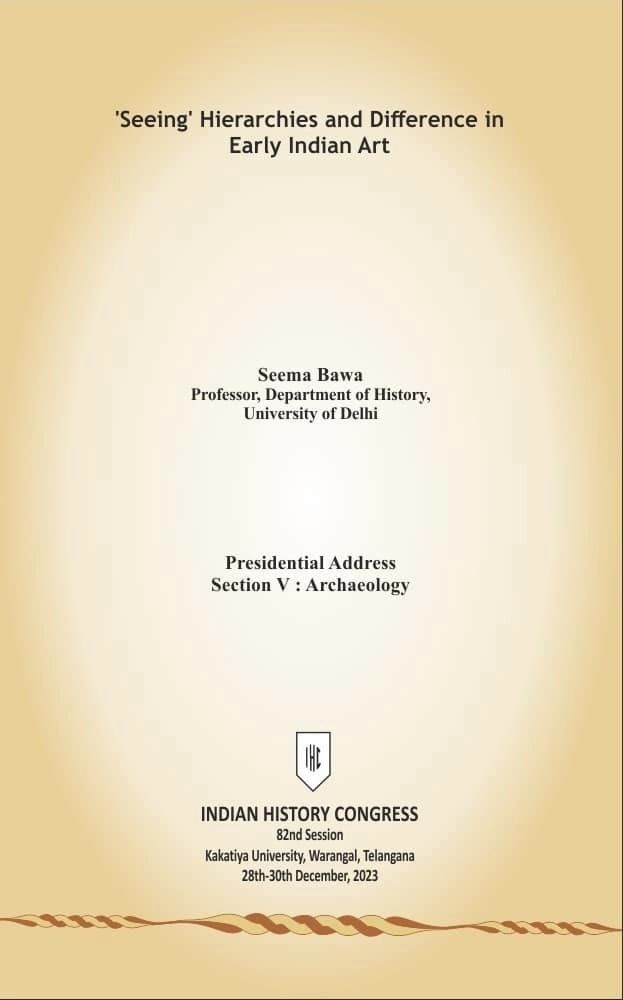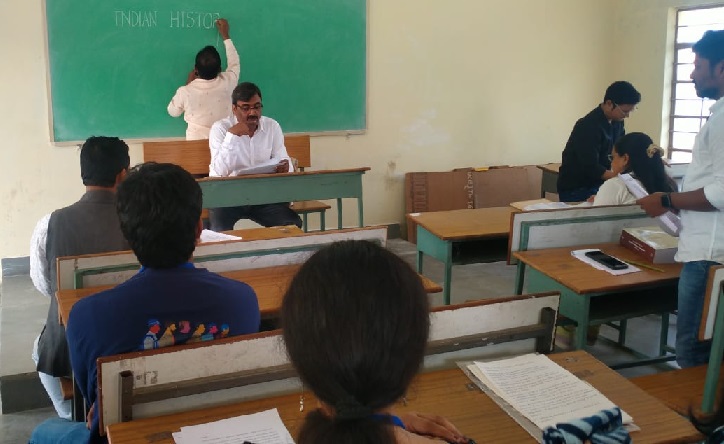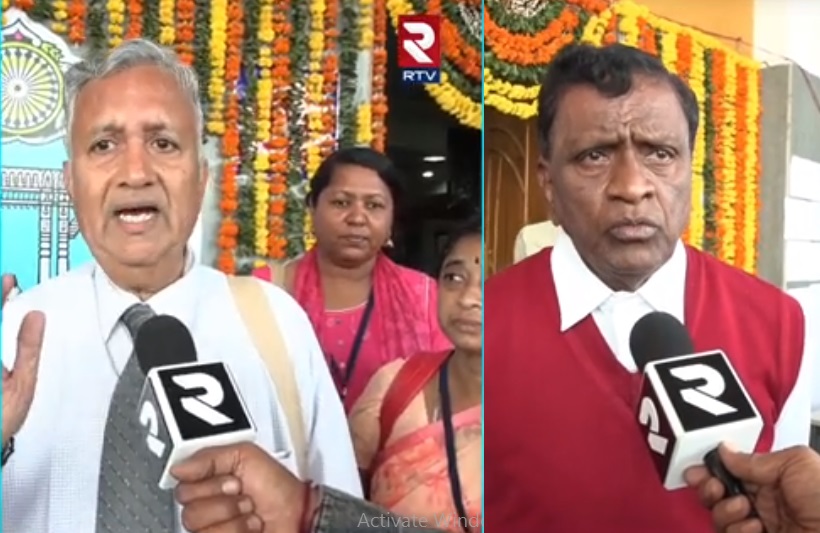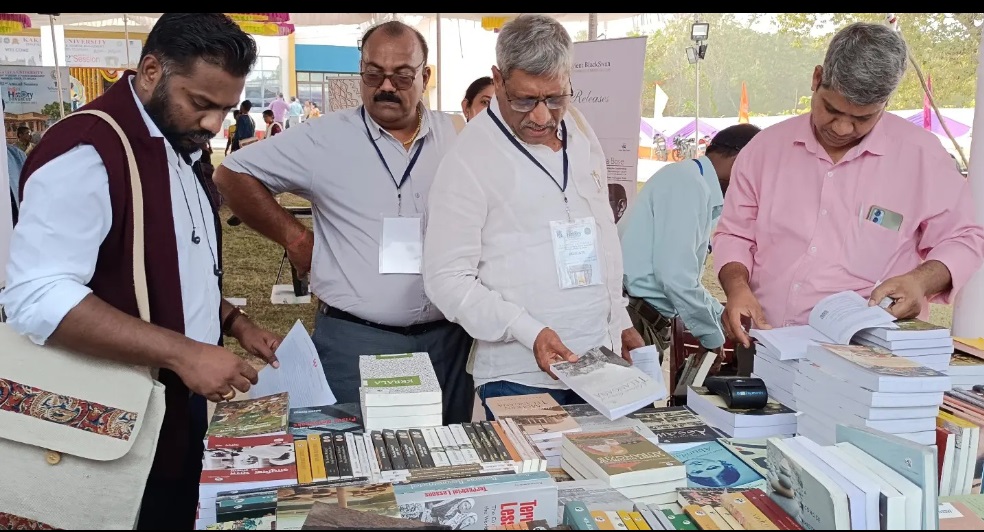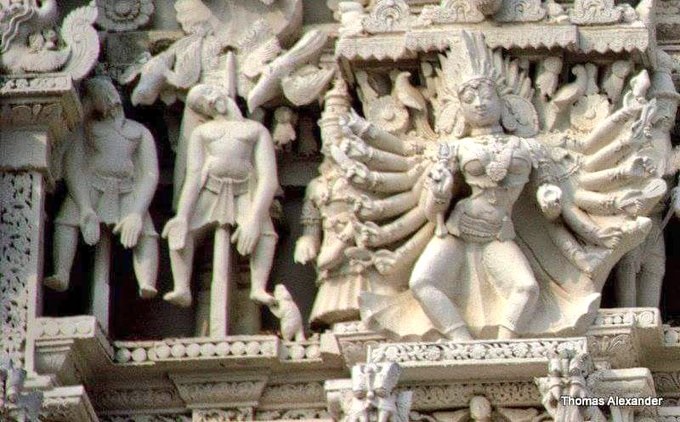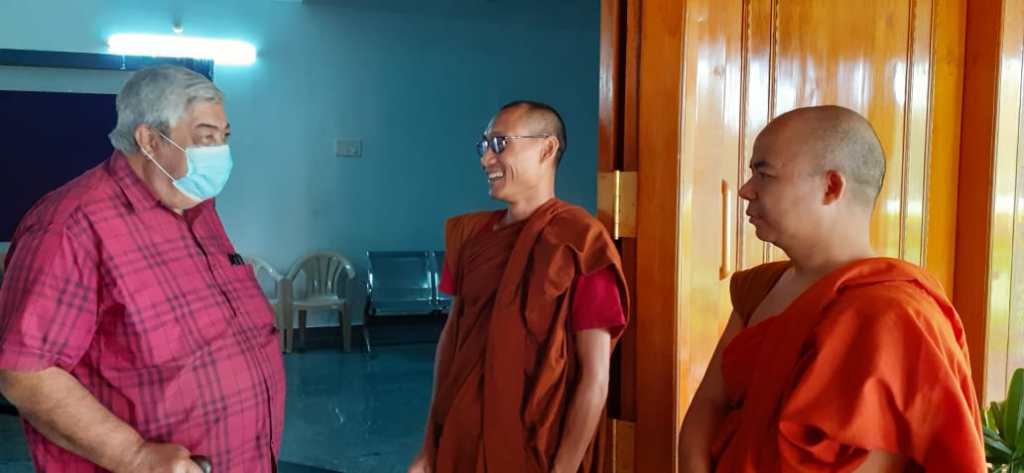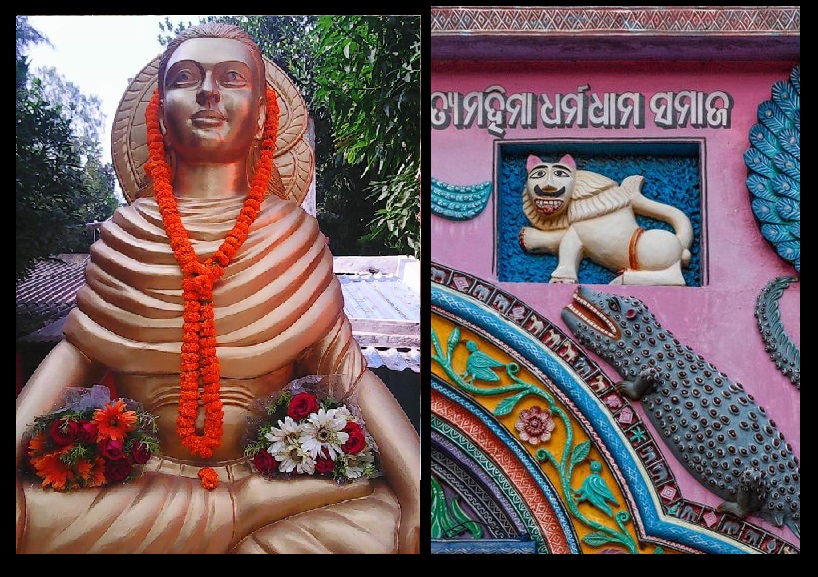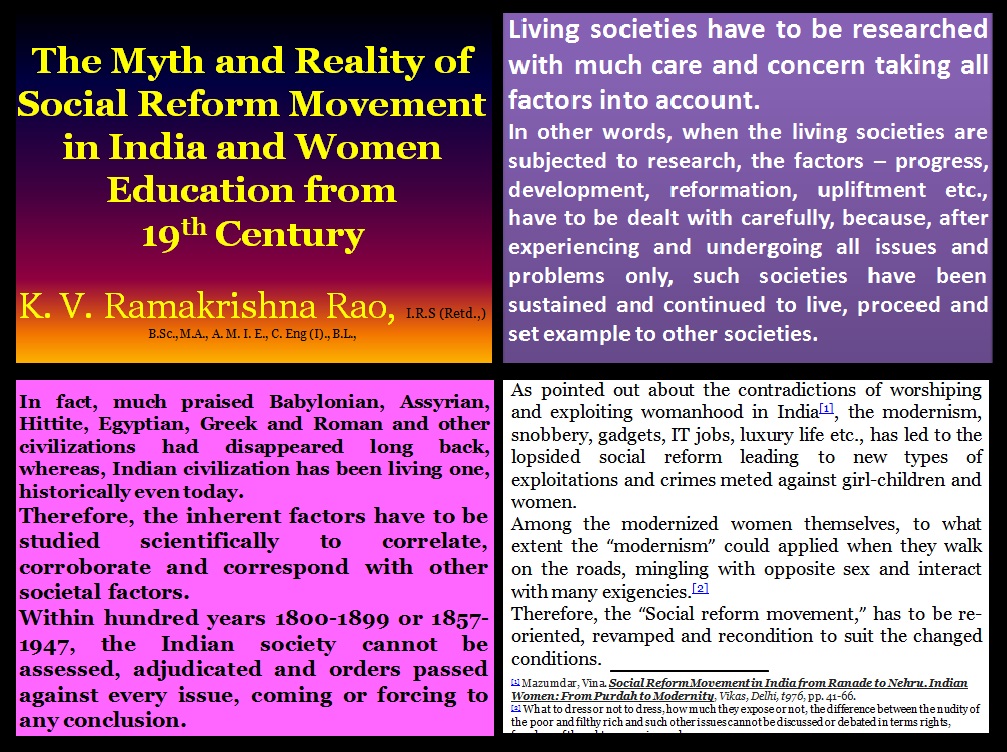National Seminar on Migration Movements and Indian Diaspora in Modern Period
The seminar, theme and brief of the organizers: The following brief is based on the brochure issued by the seminar organizers and also available in the internet[1].
| Acharya Nagarjuna University Ongole Campus (PG Centre) was established in the year 1993 as one of two Post Graduate Centres of Acharya Nagarjuna University, which was named after the famous Buddhist Philosopher and exponent of Madyamika Philosophy, to cater the needs of higher learning in Prakasam District. Initially the campus has been started with five Post Graduate Departments and the Department of History is one of them. Three more Departments were added later. The department of History is presently offering MA., M.Phil., and Ph.D. Courses.In recent times Diasporic history secured a unique place in Indian history. And largely it is uninterested history and forgotten, which encompasses narratives of displacement, migration, the cross fertilization of ideas, and the emergency of new cultural trends and practices, is increasingly being viewed as an important and intrinsic part of the story of late modernity and humanity’s drift towards globalization, transnational economic and cultural exchanges, and hybrid forms of
political, cultural, and social identity.
Migration and Diaspora raises question of structural and historical distinction between the socio-cultural pluralism of societies like India and the ones overseas where Indian populations migrated and settled, and answers in it terms of dialectically related civilizations and settlements societies.
Three major issues affecting the overseas Indian communities are explored, viz., difference and transformation, hybridity and creolisation, and policies of multiculturalism. The conclusion underlines factors such as locationality of the analyst, the general pacifist orientation of Diaspora communities, and slippage between the imaginary and imagined in relation to India that characterize Indian Diaspora and its influence on historical study.
Sub Themes:
- Historical background of Indian Migrations.
- Labour Diaspora Under Colonialism.
- Regional Dimentions of Indian Diospora-SouthIndia-UP, Bihar, Bengal, Punjab, Kerala etc.,
- Telugu Diaspora in historical Perspective.
- Indian Diaspora in the South and South East Asia, Gulf and Western countries
- Globalisation, Diaspora Identity and multiculturalism
- Socio-Economic and cultural effects of Migration
- Diaspora Impact on Indian Economy
- Any other Theme Related to Main Topic.
Out comes of the Seminar
Increased understanding of participants on the impact of contemporary concerns on
people. Increased knowledge on possible interventions. Publication of the seminar
papers that are accepted for presentation. The above are only some of the sub-themes which are only suggestive but not exhaustive.
Call for papers:
We expect wide spread participation in our National Seminar from learned scholars all over the country. We are sure, the theme of the seminar has good scope for participation of scholars from various disciplines like History, Social Work, Sociology, Anthropology, Psychology, Economics, Politics etc., and we hope that it delivers the desired results. The paper writers can also submit papers on any other sub-themes of their choice related to the main theme of the seminar.
Abstracts may be sent by E-mail to rajmohangutti@yahoo.co.in or by post to
the Co-Ordinator before schedule by soft copy (MS Word).
Dates to be noted:
Last date for Abstract : 01st March 2013
Notification of acceptance:05th March 2013
Last date for full paper :20th March 2013
The organizers of the seminar would like to bring out the proceedings in the form of
a book at a later stage. The papers should reach the Seminar Coordinator on or before 20th March, 2013.
Travel and Accommodation: III AC train fare as per the rule of University will be
given to participants whose paper is accepted for presentation. Moderate accommodation will be provided after receiving conformation.
Looking forward to meet you at Ongole. |
The P. G. Centre is situated on the Eluru By-pass Road, backside of Rajivgandhi Institute of Medical Sciences and Hospital (RIMS), next to Jawahar Navodhya School and 3 kms from the Ongole railway station.

The Google-aerial photos show the position. Though, now the backside of the new building has been near to the By-pass Road, the entrance is on the other side.

The position of Ongole railway station and the P. G. College Centre are shown.
Migration, immigration and emigration: The delegates from different states had come to attend and present papers. The proceedings of the seminar had been lively, interactive and exchange of ideas. In general, most of the paper presenters have not been very clear about the crucial words – migrate, immigrate and emigrate as verbs and their noun and adjective forms migration, immigration and emigration and migrant, immigrant and emigrant.
- Migrate – move from one place to another, this has been voluntary on the part of person, who wants to migrate from one place to another and he may or may not settle at new place permanently.
- Immigrate – people coming or bringing people into a country as settler, usually such forceful migration was effected during the Mohammedan / Mughal and colonial periods, where Indians were carried away by different means.
- Emigration – a person goes from one country to another, mainly, as political exile, to escape from punishment and other reasons.
And legal context, it has specific definitions with penal provisions for violating such acts of immigration and emigration.
Main theme and sub-themes: The main theme of the seminar had been “Migration Movements and Indian Diaspora in Modern Period” and the sub-themes were given only to embrace, encompass and elaborate the main theme. However, the papers on “migration” went on dealing with the movement of people within India during the ancient and medieval periods. The emphasis on “Andhras” had still confused them to differentiate “Andhras” from other people of “tamizhagam”, “South India”, Southern peninsula, “Coromandel”, “Deccan” and so on. The uncomfortable confusion and mix-up had been so evident when they tried to distinguish and separate “Andhras” from others, particularly from “Tamils”, as such dichotomy could hardly be found earlier. Ironically, as historians and other experts still believe and uphold the “Aryan-Dravidian” hypotheses and theories it is intriguing to single out Andhras out of “Dravidians” and attribute the diasporic ventures and adventures of them exclusively in the ancient and medieval periods.
Diaspora – meaning and definition: Based on different dictionary meanings, the dispora is defined as follows:
- The dispersion of Jews outside of Israel from the sixth century b.c.E, when they were exiled to Babylonia, until the present time.
- often diaspora The body of Jews or Jewish communities outside Palestine or modern Israel.
- diaspora
a. A dispersion of a people from their original homeland.
b. The community formed by such a people: “the glutinous dish known throughout the [West African] diaspora as … fufu” (Jonell Nash).
4. diaspora A dispersion of an originally homogeneous entity, such as a language or culture: “the diaspora of English into several mutually incomprehensible languages” (Randolph Quirk).
Thus, some paper-presenters had been so attracted towards the “Jewish” connotation and started expounding how they achieved the statehood of “Isreal”. However, Steven Vertovec[2] has dealt with it in South Asian religious context and pointed out that it could be understood as –
- Social form,
- Type of consciousness and
- Mode of Cultural process.
Hindu, Jaina and Buddhist confusion, mix-up and consequent interpretations: As “Greater India” and “Contribution of Indians” to SEA and such other subject-matters have been branded as “nationalistic”, the paper-presenters had been uncomfortable in calling “a spade a spade” or overenthusiastic to discover “migration” of Jains and Buddhists in ancient and medieval periods, that too, within “India” and even “Bharat or Hindustan”. When the ancient Tamil literature or popularly known as “Sangam literature”[3] and as well as the post-Sangam literature[4] has already vouchsafed the presence of Jains of different categories and Buddhists, the forced discovery of “migration” at later periods appeared to be excessive and irrelevant in the disporic context. In fact, the presence of Jains could be researched in the north-west and even beyond in the Indian disporic context, as Alexander had kidnapped gymnophists[5], of course, killing few, as they opposed and one even reportedly cursed him. The Gnostics[6], the Essences[7], the nudity of the Greeks[8] etc., could have been interesting topics. Edward Pockoke[9], Col.Tod[10], Waddel and others have dealt with the issues in detail. The Digambara and Swetembara nature of these groups has been so striking along with the strict discipline practiced.
Theoretical and hypothetical frame-work: Delving upon the theories and cases of Stuart Hall[11] (cultural theorist), Edward Said, Amretya sen, Charles Taylor, Sulmam Rushdie and others, diaspora and identity and related topics were dealt with, however, missing the Indian context. As the medieval colonial forces including the aiding and abetting Arabs, moors, Mohammedans or recorded with any other name, uprooted the social, cultural and economic roots of the Indian people, the discussion of “multi-culturalism” appears to be conflicting with their social, societal, communal, economic, spiritual and other common factors. The “many-ness” exhibited among the migrated, immigrated, displaced, expatriated, deported, exiled, excommunicated categories could not be a discerning distinguishable identity.
Literature, literary criticism and Indian disporic study: Historical studies of Indian diaspora could not reconcile with the literary diasporic studies including criticisms and reviews of novels and poetry. Ironically, none of them pointed out the recordings of Subramanya Bharati who pasteurised about the conditions of the Indian women working in the sugarcane fields of Mauritius. Here, the point is the writers or poets writing and composing about “Indian diaspora” from outside and inside India. As historians, import the literary criticism terminology in historiography and interpret, here also such attempts are noted. But when the question of approaching facts comes, historians openly assert that they need not be objective. So when “non-Indians /NRIs” and other migrated, immigrated, displaced, expatriated, deported, exiled, excommunicated categories look at Indians, it could be “romantic” for others with the “imaginary” heroines / heroes moving in “imaginary spaces”, but within the “historical times”. Though attractive titles were chosen, the reflections had been selective. V. S. Naipaul’s works ignored; Amitav Ghosh’s “Sea of Poppies”, The Calcutta Chromosome, The circle of reason, In an antique land etc., are not even whispered.
The Jewish case / model is irrelevant to Indian diaspora: Some paper-presenters had imitated the “Jewish model”[12] without analysing the facts of Indians forced to send out of India and also freely deriving meaning[13]. They had been enamoured about the Jewish case / model and tried to compare with the Indian diaspora as if the Jewish “promised land” was “India that was Hindustan”, but ending with “imaginary land”. The problems perceived such as external pressures for assimilation and internal tensions cannot work with the people of traditional societies, who were migrated, emigrated or emigrated in the recent past. The diasporic imaginary as expounded in such postcolonial reconfigurations in the context of multiculturalism is redundant in such futile comparison as “Jews” were always considered as “monolithic” just like “monolithic white”, whereas, the Indian black could be somewhere between black and brown.
03-04-2013 (Wednesday) – First day of the seminar: Inauguration, introducing the theme, key-note address, vote of thanks, facilitation etc., went on till afternoon. After lumch, the technical session started with the chairing of Dr Krishna Ranga Rao and the following papers were presented:
Prof Krishna Ranga Rao, Chairperson and Dr V. Sudarson, rapporteur.
|
Sl
No
|
Name of the paper presenter
|
Title of the paper
|
| 1 |
Neetu Devi |
Twice-displaced identity and cultural hybridity in twice displaced Indian diaspora: Reflections |
| 2 |
Pareswar Sahoo |
India’s diaspora and the Kalinga identity: A study on Socio economic development |
| 3 |
B. Narasingaraja Naidu |
Contribution of Telugu to Madras |
| 4 |
K. V. Ramakrishna Rao |
The British treatment of women-slaves of Indian and non-India origins during the colonial and disporic periods. |
After lunch, the session started with G. Jawaharlal, s Chairman and P. C. Venkata Subbaish, as rapporteur and the following papers were presented:
|
Sl
No
|
Name of the paper presenter
|
Title of the paper
|
| 1 |
|
|
| 2 |
Aravinda Kumar |
Migration of Andhras to Tamilnadu |
| 3 |
C. B. Kamati |
Globalisation, diaspora identity and multi-culturalism |
| 4 |
A. Kishore Kumar |
Indian immigrant’smodern slavery: A study of Indian emigration to the gulf countries |
| 5 |
Kate Dandesh Kumar |
Migration movements and Indian diaspora in modern period: Socio-economic and cultural effects of migration |
04-04-2013 (thursday) – second day of the seminar: The seconday proceedings started with Dr B. N. Naidu, as Chairperson and Dr N. Nirmala Mani, asrapporteur.
|
Sl
No
|
Name of the paper presenter
|
Title of the paper
|
| 1 |
Harshavardhana |
Globalization and diaspora identity: An Indian perspective. |
| 2 |
V. Ranga Raj |
The Telugu diaspora and its socio, economic and cultural impact in SEA, Burma, Mauritius, Fiji, and South Africa. |
| 3 |
Hariprasad |
The Role of Indian diaspora in the globalization |
| 4 |
Sumabala |
Migrations and their cultural contribution |
| 5 |
G. Venkateswara Rao |
Migration of Puduru Dravidar to Nellore district |
During this session, Sri. Christu dass, hailing from Ongole, now, a NRI from Indianopolis, USA, spoke about his experience.
After lunch, the session again started with Dr K. Gangaiah, as chairperson and Dr B. Bharathi Devi, as rapporteur
|
Sl
No
|
Name of the paper presenter
|
Title of the paper
|
| 1 |
Neelima |
The new movement in Indian diasporic English fiction – An evaluation of Bharati Mukhejee;s Jasmine. |
| 2 |
G. Jawaharlal |
Migrations occurred in ancient and medieval periods |
| 3 |
Nettikallappa |
Historical background of the Sugali tribe |
| 4 |
V Sudarson |
Socio-cultural contributons of India dispora to South Africa |
| 5 |
Bharathi Devi |
|
Afternoon second and final session was started with Prof David Raju chairperson and B. Padmaja, rapporteur.
|
Sl
No
|
Name of the paper presenter
|
Title of the paper
|
| 1 |
Prabhukumari |
Contribution of Indian migrants in Kula Lampur |
| 2 |
Nageswara Rao |
Conditions of Indian migrants in USA before 1945 |
| 3 |
Pravaga |
Contribution of Indian migrants in SEA. |

Entrance of the venue of the ICHR National Seminar, Acharya Nagarjuna University Campus, Department of History, P.G. Centre, Ongole.

Second floor corner – where the seminar was held. Side view of the building is shown above.

Migration movements and Indian dispora in modern period 3rd and 4th april 2013

Seminar inauguration – S / Sri Narasimha Rao, Prof Ratan Lal Hangaloo, Department of history, University of Hyderabad; Adapa Sathyanarayana, Department of history, Goa University; G. V. Ramakrishna RaoDirector I/c, Department of Museum and Archaeology, Hyderabad; Prof Y. P. Rama Subbaiah, Rector, Acharya Nagarjuna University; Dr G. Raja Mohan Rao, Speciall Officer, ANU Ongole Campus and Seminar Co-ordinator can be seen sitting in order.

lighting lamp to inaugurate the seminar

The above photo – courtesy – The Hindu

A view of the audience

another view of the audience

yet another view of the audience

A view of the audience

First session chaired by Prof Krishna Ranga Rao and Dr V. Sudarson as rappoteur; the paper presenters – Dr B. Narasingaraja Naidu; Dr Pareswar Sahoo, Bhubaneswar; K. V. Ramakrishna rao, Chennai.

After lunch, 2nd session chaired by Dr Jawaharlal holding mike – the paper presenters – Dr Aravinda Kumar; C. B. Kamati, Nipani, Belgaum, Karnataka; Dr K. Nettikallappa (sitting backside)

same as above – another view

A View of the audience during the 2nd session – Dr Gangaiah, G. Krishna Ranga Rao

-do- Gangaiah, Krishna Ranga Rao, Neetu Devi, Pareswar Sahoo (first row)

04-04-2013 – second day session; Dr P. Sumabala, Prof Harshavardhana, (front); Prof G. Venkateswara Rao, (back)

Dr B. N. Naidu charing the session – Harshavardhan, G. Venkateswara Rao, (order as in the photo)

Sri Christu Das, NRI from Indianapolis, USA explaining his experience
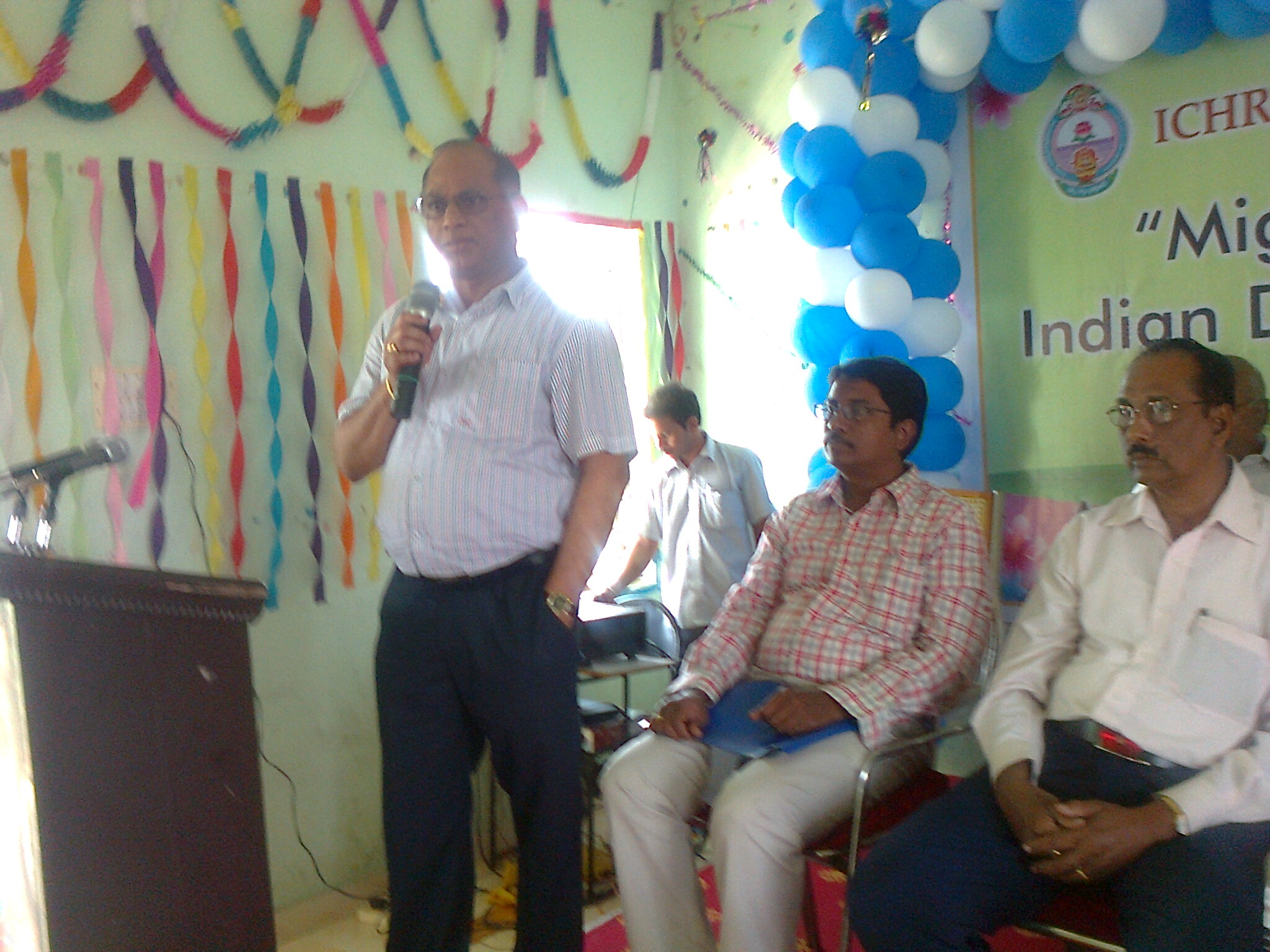
same as above

After lunch, the session started with Dr Gangaiah charing afternoon session; Smt C . Neelima presenting paper (partially hidden), Gangaiah, Dr B. Bharathi Devi, Dr Sudharson,

A view during the session; Christiudass, Aravinda Kumar, Naidu and others can be seen

Concluding session chaied by David Raju; Prabhu Kumari, David Raju, Nageswara Rao, B. Padmaja, Dr Prayaga

same as above
[3] The period of Sangam c.500-300 BCE to 100-300CE has been accepted by the world historians and experts.
[4] The Jains had been dominant during the period starting from first century to 9th-10th centuries. Of course, the Kalabhras, the despotic Jains rulers of Karnataka have been accused of destroying Tamil culture. Some overenthusiastic Jaina protagonists even claim that Tiruvalluvar was a student of Kunda-Kundacharya and he stole the work of the master and circulated it as his work!
[5] The Greek and Persian accounts give these details ad of curse recorded by the reputed and elite historians also.
[6] The Gnostics had been a white rob worn group living separately with virtues. The Christologists claim that Jesus Christ could be from that group.
[7] The Christologists also claim that Jesus Christ could be from that group, as they were following strict discipline of renunciation, virtues etc.
[9] Edward Pocokoke, India in Greece, Swati Punlications, New Delhi, 1975.
[10] Col. Tod, Annals and Aniquities of Rajasthan, Motilal Banarasidas, New Delhi, 2000.
[12] Monika Fludernik (Ed.), Diaspora and Multiculturalism: Common Traditions and New Developments, Cross / cultures 66, Rodopi B.V, Amsterdam, Netherlands, 2003.
[13] The Jewish diaspora (or simply the Diaspora; Hebrew Galut גלות; Yiddish Golus) was the historical exile and dispersion of Jews from the region of the Kingdom of Judah and Roman Judaea, as well as the later emigration from wider Eretz Israel.
Filed under: andhra, anti-india, anti-indian, ayah, baby-sitter, black, bonded, chinese, civilization, colonial, colony, coolie, coolitude, daispora, durban, economics, emigration, ethnicity, farmer, female-worker, greater india, helper, heritage, history, immigration, indenture, india, labour, laskar, linguistics, linguistuic study, london, maid, migration, mind, miscegenation, mistress, Nagarjuna, Nagarjuna University, negritude, negro, pallava, phobia, plantation, prostitution, race, regionalism, research, researcher, rubber, servant-maid, sex, sexploitation, slave, slavery, South Africa, sugar, white, white prostitution, worker, xenophobia | Tagged: black, brown, coolie, coolitude, delegate, discrimination, India, linguistics, literature, negro, phobia, race, racialism, racism, slave, white, xenophobia | 1 Comment »






